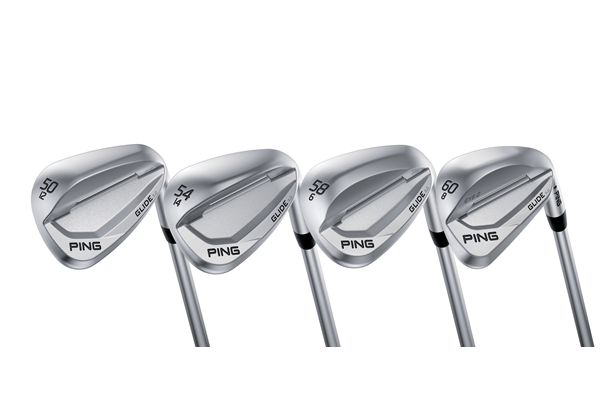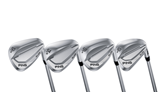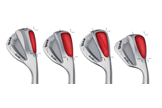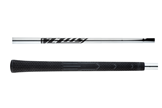Ping Glide 3.0 wedge Review
Last updated:
-
At a glance
- TG Rating
- Owner Rating
What we say...
Ping wedges have a had a cult following with tour pros and amateurs for the last 30-plus years.
The deep cavityback Eye2, with its flowing head shape, is definitely the most high profile, and amazingly still appears periodically today on Tour.
But where Ping has tailored its modern wedges much more conventionally over recent years, other brands have started playing with progressive centre of gravity tech (Titleist Vokey Design SM7) and Hi-Toe models (TaylorMade), which is just the sort of thing Ping would claim the ungainly Eye2 pioneered three decades ago.
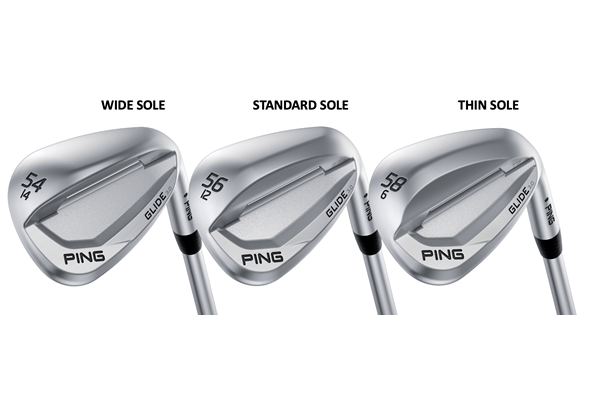
So, Ping has used all its wedge know-how to come up with the new Glide 3.0, and thanks to a new cavityback design and extra mass positioned high in the toe, they’re said to offer 5% more forgiveness. Ping says Glide 3.0 have a rounded head profile, a tapered hosel, and an elastomer insert to manage vibration, improving feel/sound to similar levels as their popular i210 iron.
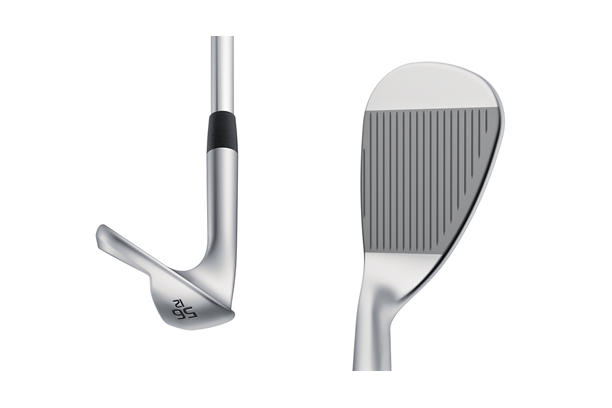
Extra hosel offset means Glide 3.0 launches lower and spins more, and 15g shaved from the weight (5g head, 4g shaft, 6g shaft), means in combination with a new lighter Nippon Z-Z 115 shaft, improved feel.
Just like previous Glide 2.0 wedges there’s a half-groove low in the face along with CNC milled faces and sharper/deeper grooves which Ping says improves backspin by 1000rpm.
To make sure all fitting bases are covered Ping will offer the new Glide 3.0 in four sole grinds (TS; Thin sole, SS; Standard sole, WS; Wide sole, Eye2). And for pure nostalgia Ping says the Eye2 has the same sole profile, hosel transition and high toe shape as the original 1982 Eye2. Each Glide 3.0 wedge also comes decked out with Ping’s hydropearl finish, which repels water and reduces friction as the head travels through turf.
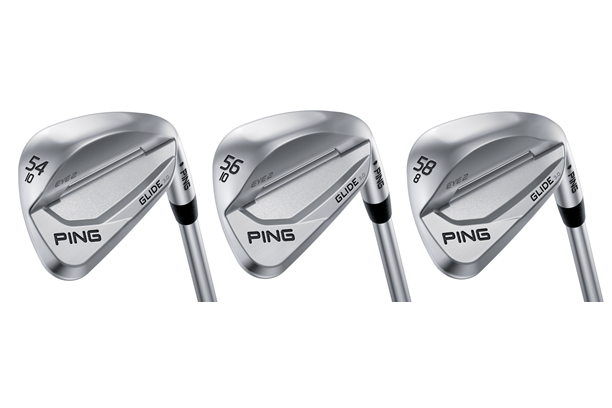
Ping Glide 3.0 £130 (s) £140 (g)
Standard sole: 46° / 50° / 52° / 54° / 56° / 58° / 60°
Thin sole: 58° / 60°
Wide sole: 54° / 56° / 58° / 60°
Eye2: 54° / 56° / 58° / 60°
WATCH: Best 2021 Wedge video
Verdict: Ping Glide 3.0 wedge
For golfers who can’t quite commit to using a full-on cavity wedge (like the Cleveland) the Glide 3.0s are an excellent midway alternative. Ping pitch them as cavity models, and they’re completely inoffensive.
Thanks to a custom tuning port (which removes weight low down in the head) and extra weight high in the toe, they’re actually pretty forgiving compared to traditional blade-style wedges. The longer grip and alignment arrows, which allow golfers to cover off different yardage gaps are useful and well worth experimenting with.
We applaud how Ping have shaved weight from the head, shaft and grip, which goes some way to addressing how club golfers have, for years, played heavy, unforgiving wedges.
What Ping say about the Glide 3.0 wedges
In developing the new Glide 3.0 wedges, Ping’s engineers took a grip-to-grind approach, re-designing every component of the club to create a higher-spinning, more forgiving, lighter overall design that offers multiple sole grind options to custom-fit golfers of all skill levels.
“In the Glide 3.0 series, we’re broadening the appeal of our wedges and providing more differentiation within our own line and the rest of the marketplace,” said John K. Solheim, Ping President. “We approached the design with a goal of creating higher-spinning, great-looking wedges that also deliver more forgiveness with the improved feel from our other proven technologies. Every detail in the Glide 3.0 is designed to improve short-game performance, from the longer grip for choking down to the Hydropearl 2.0 chrome finish that helps the wedge glide through the grass.”
“From a fitting standpoint, we engineered four distinctly different sole grinds, including an Eye2 sand-wedge-inspired option, to ensure that trained Ping club fitters can properly match a Glide 3.0 to a golfer’s swing and playing conditions,” Solheim said. “We’re excited about getting it into golfers’ hands. It had a win its first week on the PGA Tour when Nate Lashley used one in his amazing and inspiring victory at the Rocket Mortgage Classic.”
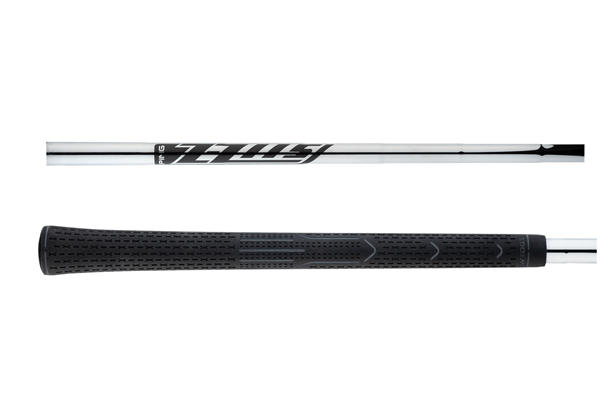
Improved Feel and Forgiveness
In the Glide 3.0 wedges, PING’s engineers put a premium on the feel and forgiveness by leveraging the multi-material construction that combines a 431 stainless steel head with a larger and softer elastomer Custom Tuning Port (CTP) insert. Similar to the popular i210 irons, the additional volume of the CTP allows for a larger insert covering more of the back of the face, resulting in activation of the elastomer at impact to produce a soft yet solid feel.
The new, patented cavity design and larger CTP expand the perimeter weighting to increase the MOI and position the centre of gravity higher to yield lower-launching, higher-spinning trajectories for more control.
“The Glide 3.0 wedge is a great blend of a players-style design and game-improvement technology,” said Solheim. “At address, it provides the clean look of a tour-style wedge. We’ve added some offset based on tour player feedback to provide a more captured look.
At the same time, we’ve increased the perimeter weighting and improved the feel with the softer insert material to ensure golfers have the forgiveness they need to play with confidence on approach shots. The combination of those attributes really sets the Glide 3.0 wedges apart and gives them a much broader appeal.”
Precision-Milled Grooves
Patented wheel-cut grooves developed by Ping’s engineering and manufacturing teams enable grooves with a sharper edge radius, which increases interaction with the ball at impact, creating more friction for improved spin and trajectory control.
The grooves in the lower-lofted wedges (46°, 50° & 52°) are milled with a 20° sidewall and a .005″ edge radius for optimal full-shot performance. The higher-lofted versions (54°, 56°, 58° & 60°) feature an extra ½ groove at the bottom of the face for added spin and are milled to a .004″ edge radius with a 28° sidewall to impart more spin, especially around the greens.
A Focus on Fitting
With an emphasis on expanding the wedge sole options to better custom-fit golfers, PING engineers crafted four differentiated sole grinds in the Glide 3.0 series. Each is designed to best match a player’s angle of attack and typical turf conditions while providing performance and versatility on full and partial shots around the green.
“We see tremendous opportunity in wedge fitting in general,” said Solheim. “It starts by focusing our product designs on meeting the needs of golfers of all abilities and swings. With the new sole grinds and multiple loft options, a fitter can really dial in the wedges to help improve the player’s performance based on how they dynamically deliver the clubhead and the type of conditions they typically play in.
During the process, they can also determine the best combination of wedges to provide proper distance gaps between each club.”
Sole Grind Options:
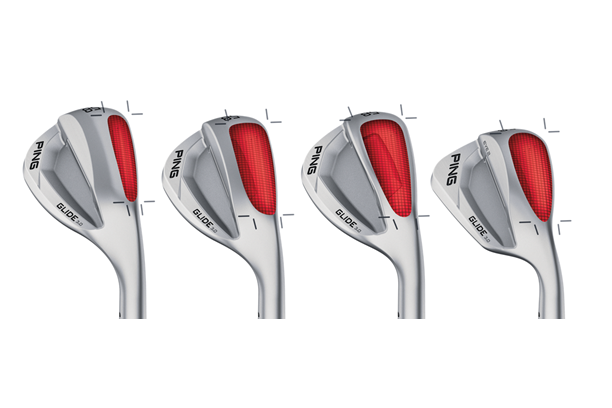
Standard Sole (SS) grind (46°/12°, 50°/12°, 52°/12°, 54°/12°, 56°/12°, 58°/10°, 60/10°)
Mid-bounce sole with heel relief. Engineered for golfers with a moderate angle of attack. Exceptional performance in a variety of turf and sand conditions. Fits most golfers.
Wide Sole (WS) grind (54°/14°, 56°/14°, 58°/14°, 60/14°)
Most forgiving through the ground. Round and cambered sole with significant bounce. Recommended for golfers with a steep angle of attack who typically play in soft turf and sand conditions.
Eye2 grind (54°/10°, 56°/10°, 58°/8°, 60°/8°)
With the high toe design pioneered by Karsten Solheim nearly 40 years ago, it matches the original Eye2 SW sole/face profiles and narrow hosel transition for the ultimate in bunker performance and touch shots near the green.
Thin Sole (TS) grind (58°/6°, 60°/6°)
Facilitates precise shot-making and versatility from tight lies. Extreme heel relief with Ping WRX-inspired bounce grind. Ideal for firm conditions and a shallow angle of attack.
Lighter Shaft and Grip
The Glide 3.0 wedge’s grip and shaft have been lightened by six and five grams, respectively, contributing to an overall weight reduction of 15 grams for the entire club.
The Dyla-wedge Lite grip, which is ¾-inch longer than a traditional grip and features a reduced taper, allows golfers to choke down for more versatility and trajectory control.
The Ping Z-Z115 wedge shaft is made by Nippon and custom engineered with a lower balance point closer to the tip to provide lower launch with more control and enhanced feel.
“The lighter overall weight allows the Glide 3.0 to better blend into a golfer’s full set and help them swing the club easier,” said Solheim. “We’ve also reduced the head weight by approximately four grams while maintaining our traditional wedge swing weights to ensure golfers still benefit from the clubhead feel they need to play with control and precision.”
Ping Glide 3.0 wedge specifications:
Multi-material construction: 431 stainless steel head, elastomer insert, Hydropearl 2.0 finish
Available in 10 color codes (lie angle). Black is standard.
Swingweight: D2 – D4, depending on loft
Stock grip: PING 360 Dyla-wedge Lite in three sizes (Aqua -1/64″, White Std., Gold +1/32″)
Stock steel shaft: PING Z-Z115 Wedge made by Nippon
Stock graphite shaft: Alta CB Red (SR, R, S)
Aftermarket shaft options (no upcharge): True Temper Dynamic Gold 105 (R300, S300), True Temper Dynamic Gold (S300, X100), True Temper Dynamic Gold 120 (S300, X100), Project X LZ (5.0, 5.5, 6.0, 6.5), True Temper XP95 (R300, S300), Nippon Pro Modus Tour 105 (S, X), KBS Tour (R, S, X).
